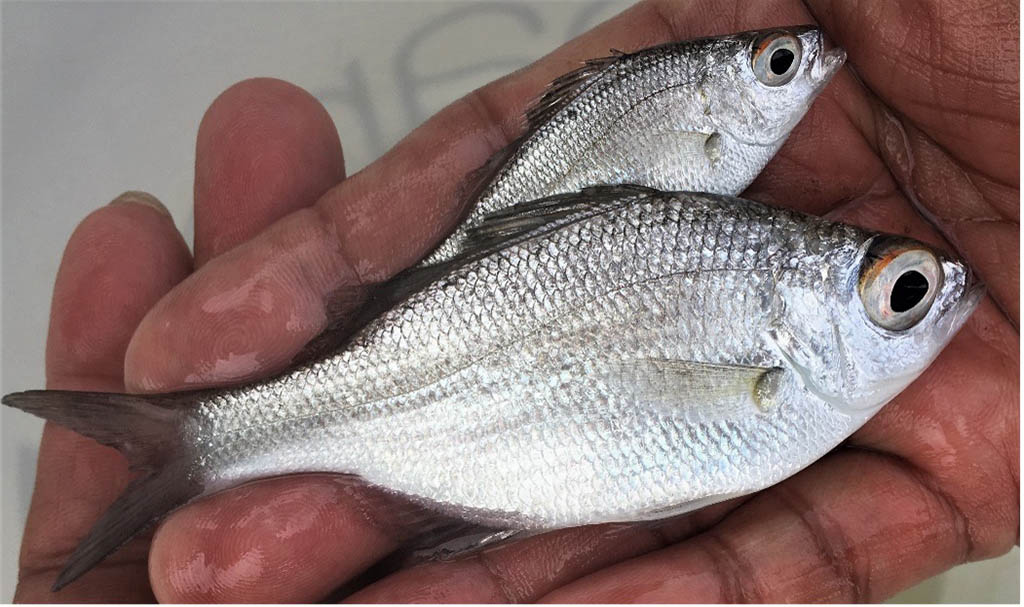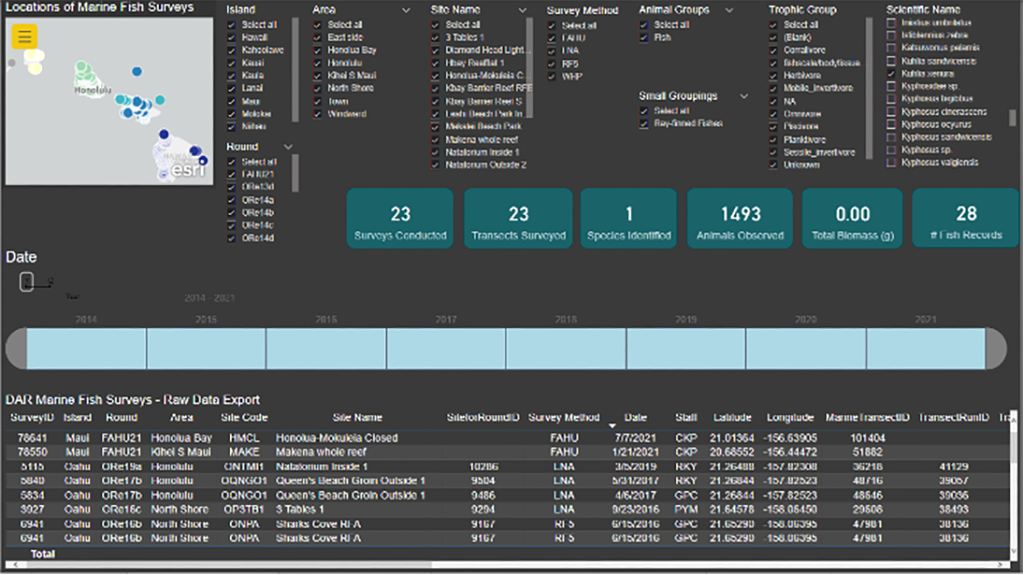9/15/23 – DAR Database – A digital transformation of fish and ecosystem data for better management
By Kim Peyton and Eko Lapp
DAR directs projects focused on monitoring aquatic resources in estuaries, streams, coral reefs, and for recreational fisheries to provide critical information to support and improve resource management and policies. These efforts are done to document changes in aquatic resources over time as well as to improve fishing opportunities. Monitoring aquatic species and their ecosystems around the islands produces a steady stream of data every year. For example, last year DAR conducted almost 450 surveys, recording 306 species, made up of over 119,000 fish and invertebrates that weighed more than 25,000 pounds.
The recently upgraded DAR Database was designed to do much more than safely preserve data and make it available for analysis for years to come. With our digital transformation DAR staff has customized dashboards to interactively visualize data summaries as figures and tables in real-time. To illustrate how this works let’s look at data collected statewide for āholehole, the endemic fish that thrives kahawai to muliwai to makai (streams to estuaries to marine).

The dashboard below shows that āholehole was observed in over 390 surveys conducted in streams throughout the islands. This fish is common but only in low elevation segments of streams.

An estuaries dashboard for āholehole also displays the wide distribution of this species throughout the islands. Focusing on the quarterly monitoring data, four estuaries, Kahana, Wailupe, Anahola and Hanalei, have the highest reported abundance of this species. However, Hilo Bay (Bayfront) and Honomanu in addition to Hanalei and Wailupe, had the most āholehole by weight (biomass in grams). These summaries show us that mostly small juvenile āholehole are sampled in Anahola and Kahana, whereas larger ones are more common in Hilo Bay and Honomanu.

Interestingly, during marine monitoring surveys āholehole is not as commonly observed around reefs compared with streams and estuaries. In a Marine dashboard forāholehole there are only 28 records for this species although it has been recorded throughout the Main Hawaiian Islands. Data summaries visualized through dashboards can reveal interesting questions, such as why is āholehole an uncommon species in marine surveys?

Overall, effective data management preserves monitoring data for the long-term. A recent study showed that the availability of research data declines with age, with the probability of relocating a data set decreasing by 17% per year on average when data management practices are not methodical. With these concerns in mind, DAR undertook a digital transformation recently by changing data management practices from seven ad hoc databases that were project-based to a single state-wide database, which was designed and built as an efficient model to improve data capture, quality, security, and preservation of aquatic data.
Financial support was provided by the Federal Aid in Wildlife and Sport Fish Restoration Program, the National Oceanic and Atmospheric Administration’s Coral Reef Conservation Program, and non-federal funds administered by the State of Hawai’i.
